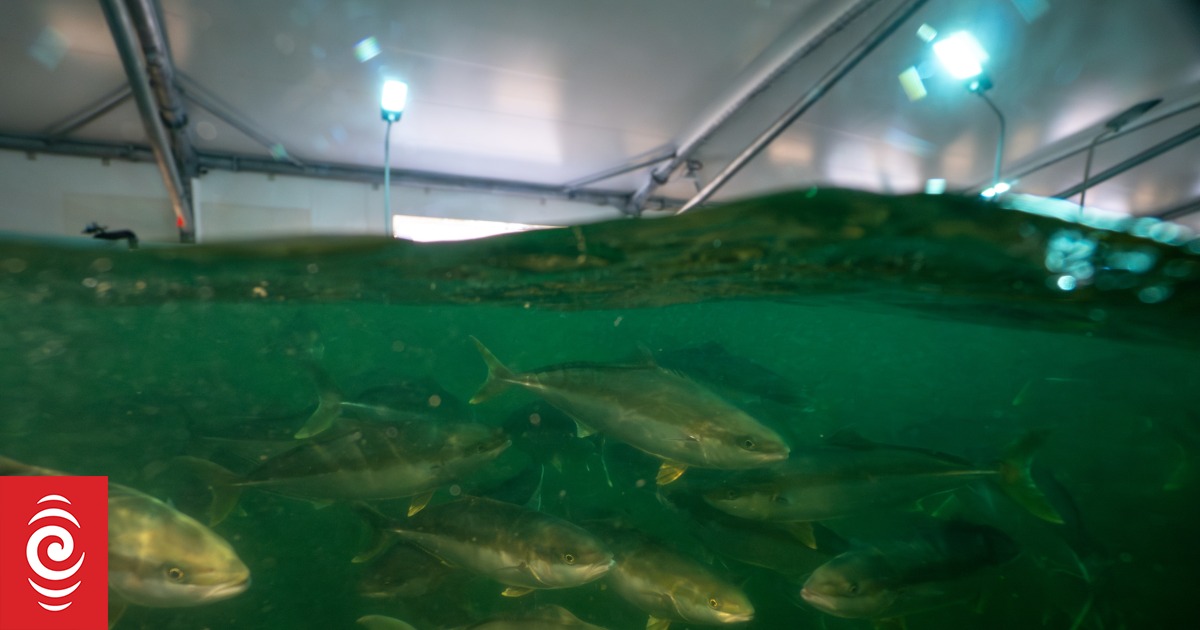In the heart of New Zealand’s Northland region, a team of scientists and aquaculturists are cultivating kingfish like never before.
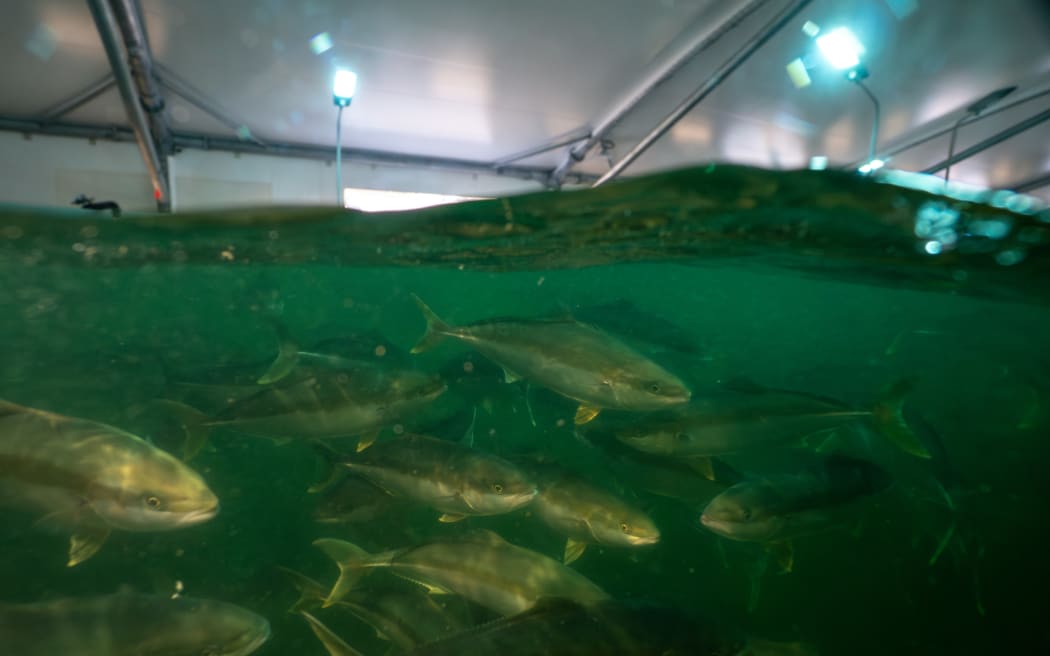
Kingfish in the recirculating aquaculture system at the Northland Marine Research Centre.
Photo: Stuart Mackay
At NIWA’s Northland Marine Research Centre (NMRC) in Ruakaka, a small-scale operation serves as a testing ground, but it’s only a glimpse of what’s to come.
This project isn’t just about fish; it’s about sustainability, technology, and changing the way we think about aquaculture.
The goal is clear: to prove that farming kingfish in tanks on a commercial scale is not only technically feasible but economically viable.
The journey to this point has been a fusion of scientific discovery and practical application. NIWA established the research centre in 2002, with a primary focus on exploring the potential of aquaculture for high-value species like kingfish.
For 18 years, Andrew Forsythe has been part of the programme acting as the chief aquaculture scientist.
He explains, “Control is everything. Any farmer will tell you if they can irrigate, and manage the soil moisture and nutrients optimally, they get better performance.
“The same thing with fish.
“Managing the environment optimally is key to achieving the best results and avoiding pathogens and parasites.”
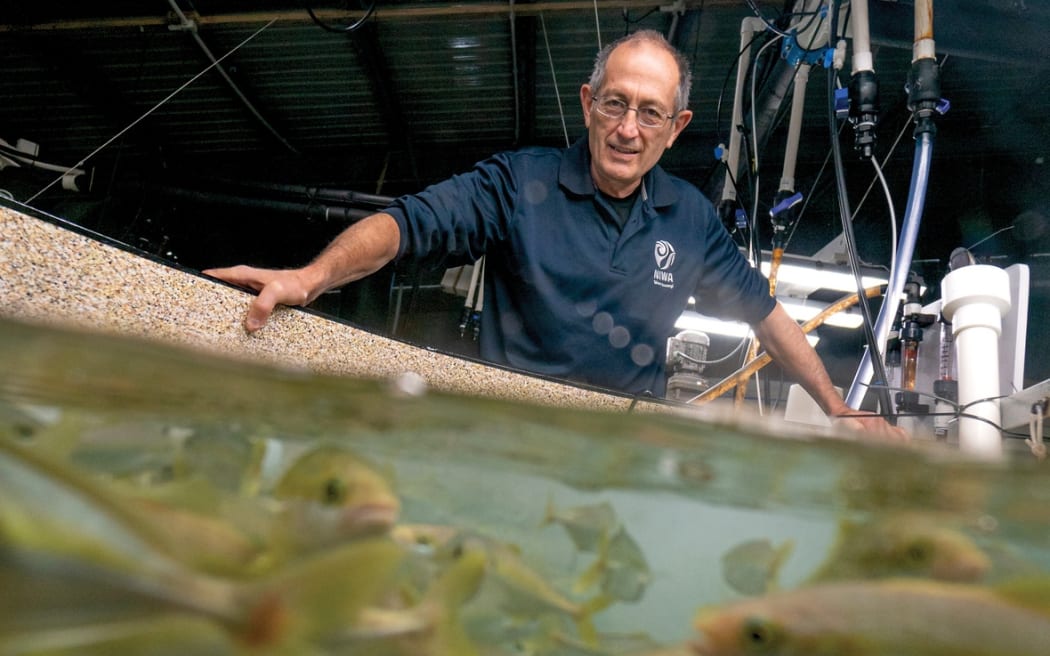
NIWA chief scientist aquaculture Andrew Forsythe.
Photo: NIWA – Stuart Mackay
Forsythe says for most of the past two decades, NIWA’s scientists had been working on two species of yellowtail kingfish and hāpuku. At some stage kingfish became the centre of operations.
“Now we are in a position where we got the yellowtail kingfish – all the breeding, the nutrition, the growing, the rearing systems – to a point where we feel it’s truly ready to commercialise properly.
“Land-based production brings a lot of benefits and it gives you total control of the environment. Because this is a warm-water fish, if you put it in a land-based system, and the temperature rises through the activities of the fish or the activity of the system, the fish grow faster, they grow better.”
Recirculating aquaculture systems resemble gigantic aquariums. What sets them apart is their ability to reuse and treat between 95 per cent and 99 per cent of the water in the system.

Water pipes that feed the research centre can only been seen via small yellow flags.
Photo: RNZ/Leah Tebbutt
And recycling doesn’t stop there. The pipes used to bring in the water were once used for the Marsden Power Station in which the research centre now sits.
Forsythe says water efficiency offers several advantages: it allows for precise control of water quality, temperature regulation to optimise growth, and the exclusion of diseases and parasites. It also significantly reduces the environmental impact compared to traditional sea-cage farming.
Forsythe continues that the innovation means the kingfish eggs can be produced virtually on demand.
By adjusting the day length and temperature, Forsythe says he can time the kingfish breeding cycle to match market demand, ensuring a continuous supply of eggs.
“Now a big female in here will produce perhaps three or four litres of eggs every four days. And when you think about 400,000 eggs per litre, there are literally millions upon millions of eggs produced.
“Our infrastructure here is probably capable of producing about a million juveniles and that would be enough to support an industry producing maybe 3000 tonnes [of fish].”
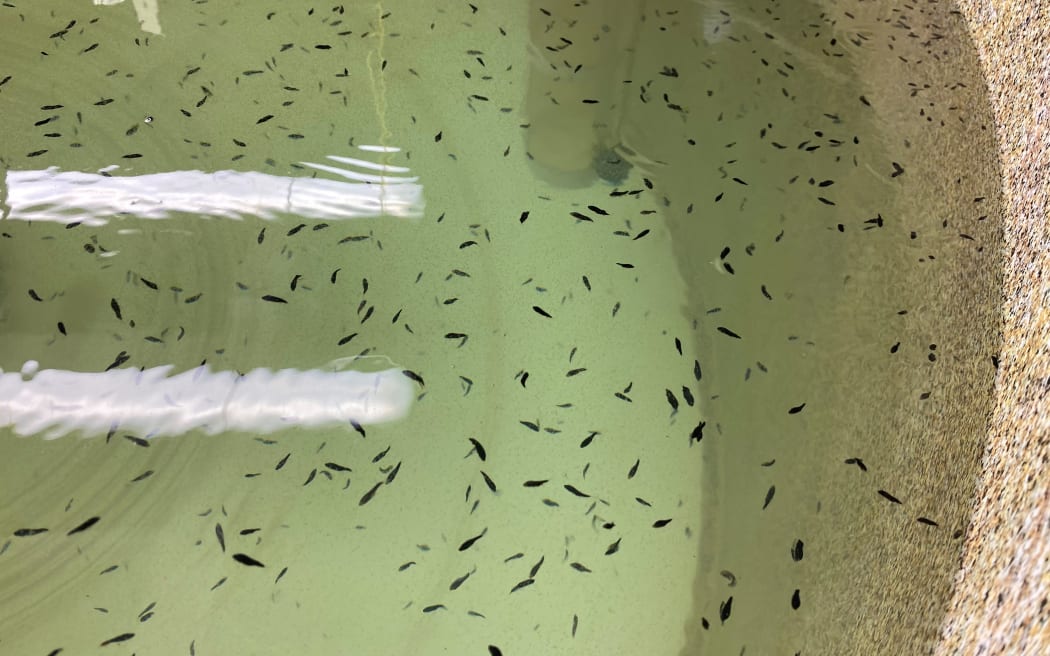
Juvenile kingfish, such as these, will be ready for market in just 12 months.
Photo: RNZ/Leah Tebbutt
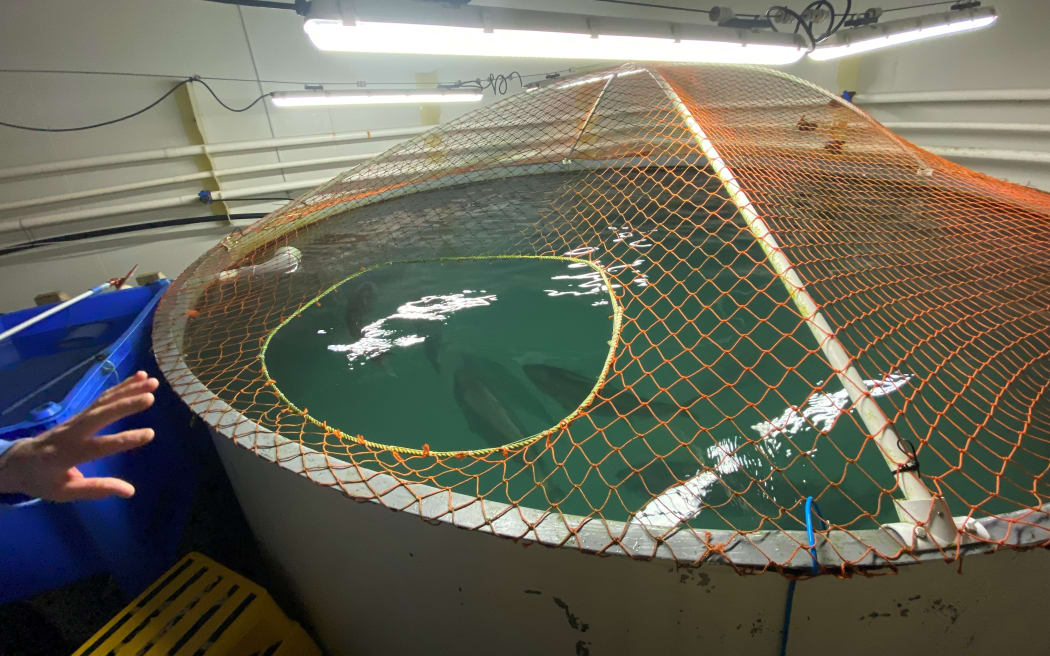
Kingfish kept for breeding are bigger than those that go to market.
Photo: RNZ/Leah Tebbutt
In reality, Forsythe says it takes 12 months for a fish to move from egg to ready for market. It’s another plus side to the amount of control they have over the fish.
While there have been concerns about aquaculture’s impact on the environment, Forsythe maintains that with the right approach, aquaculture can be both ecologically sensitive and economically beneficial.
Regarding environmental concerns, Forsythe emphasises the advantages of land-based aquaculture: “And there is muck, you know, and I think all our farming activities, terrestrial or marine, they make use of the environment.
“And I think there’s been a huge amount of overblown, honestly, nonsense about aquaculture screwing up the environment. It can be done sensitively. But you also have to consider the social license issues and the legal aspects of access to resources.”
Forsythe highlights the importance of environmental responsibility in the context of a changing climate.
“Now with a changing climate, I think we also want to insulate ourselves from extreme events.
“So it lines up nicely, and putting it on land, we have control over the animals, we can give them the optimal environment, we can capture and manage the discharges.”

Recirculating aquaculture system at the Northland Marine Research Centre.
Photo: Stuart Mackay

Brood stock at NIWA’s on-land kingfish farm.
Photo: RNZ/Leah Tebbutt
Ruakaka kingfish is now poised to become a premium product on the menus of restaurants both here and overseas. Forsythe says 600 tonnes of fish could be harvested per year on the 35,000 square metre site.
“We do see an opportunity to take the kingfish right through to market size on land and systems.
“We’ll be able to say that not only are we making the best use of the natural resources without stuffing them up when we discharge, but we also can use renewables for energy inputs.
“So, I think, at the end of the day, we end up with a very sustainable story.”

